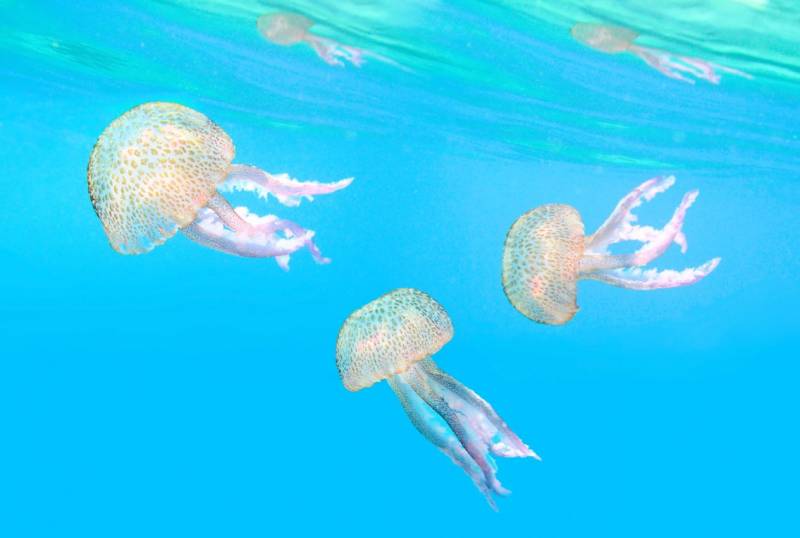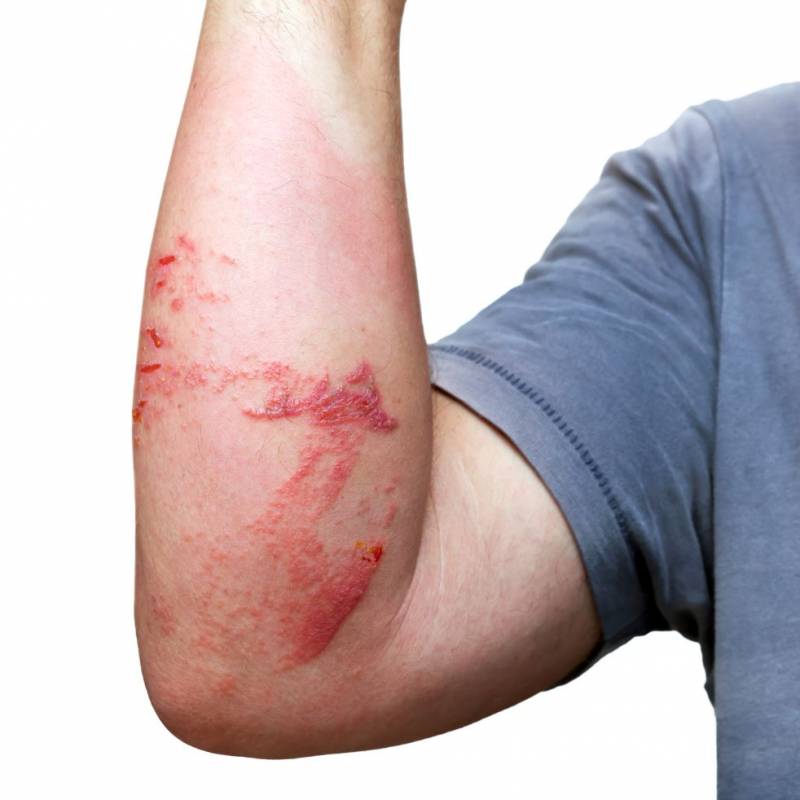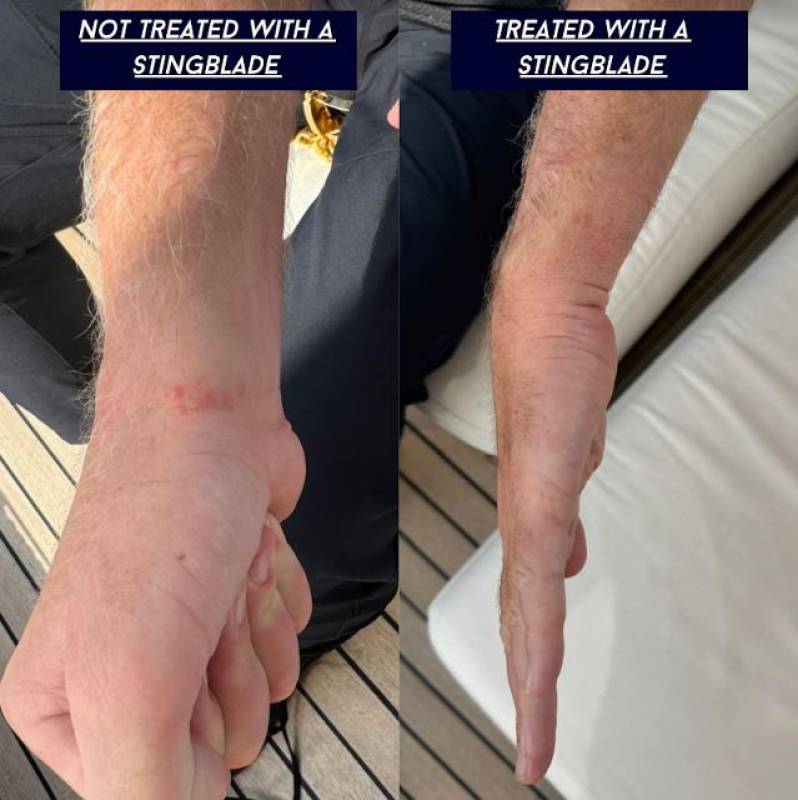
To be listed on the CAMPOSOL TODAY MAP please call +34 968 018 268.
article_detail
Date Published: 11/10/2024
English inventor creates ingenious and foolproof new way to treat jellyfish stings
The UK-designed and manufactured Stingblade was inspired by inventor Mark Dyers’ experiences swimming in Spain

Every summer – and even outside of summer thanks to rising sea temperatures – jellyfish swarms appear along the coast of Spain. While most are more of a nuisance than a real threat, some species can deliver painful stings. These stings occur when jellyfish release venom from tiny spiny filaments that come into contact with the skin.
During the warmer months, the number of jellyfish stings rises as beachgoers flock to Spain’s shores. Symptoms can include pain, skin irritation, red marks, tingling and itching. In some cases, severe allergic reactions may occur.
 Jellyfish stings are common and painful, yet effective treatments are limited. We’ve all heard the one about peeing on it, but that’s actually a myth. What you really need to do is wash the affected area with warm (non-jellyfish infested) seawater, but the hardest part is getting the micro-barbs out from your skin in the first place.
Jellyfish stings are common and painful, yet effective treatments are limited. We’ve all heard the one about peeing on it, but that’s actually a myth. What you really need to do is wash the affected area with warm (non-jellyfish infested) seawater, but the hardest part is getting the micro-barbs out from your skin in the first place.One real solution for jellyfish stings has come from English inventor Mark Dyer, who came up with the unique concept of Stingblade. It has a scraping mechanism that removes stingers and venom from the skin, offering immediate relief right on the beach, much more efficiently than traditional methods like vinegar or hot water.
How one Englishman felt the need to create a protocol for jelly stings
Stingblade is at the Barcelona Port Ginesta Boat Show & Sea Trials 2024 in Spain from October 10 to 13, and Mark Dyer, the 60-year-old inventor of Stingblade, told us that the idea originally came from a very personal place.
“I’m a swimmer and a scuba diver,” said Mark, “and I was in the Balearic Islands when the jellyfish population just exploded. I was getting hammered by them so much I was getting stings on top of my stings.”

Related story: 10 most common (and dangerous!) jellyfish found in Spain
When he got out of the water, Mark found his skin starting to bubble up, with blisters bursting and becoming infected, forcing him to go for treatment at the doctor’s. “My skin looked like a patchwork,” he recalled.
Even then, it wasn’t until an even worse jellyfish tragedy struck his sister that Mark knew he had to do something.
“My older sister was swimming in Mallorca when she got stung by a Portuguese Man o’ War,” he said. “It was from 60 feet away and she didn’t even see it.”
The Man o’ War is known as the jellyfish species with one of the most painful stings, and their tentacles have been known to grow up to 165 feet long.
“The neurotoxins from the jellyfish sting got into her skin and then when she got to shore this was made even worse when an emergency responder rubbed cream on her, trapping the toxins inside.”
The upshot was that Mark’s sister partially lost her eyesight, an affliction that never went away.
That was when, in 2018, Mark decided that he needed to stop these terrible incidents taking place in the future and there needed to be a proper protocol for when people get stung by jellyfish, instead of just relying on old wives’ tales.
So he created Stingblade.

Stingblade works on the basic idea of a diver’s knife or a razor being used to scrape the jellyfish’s stinging barbs from the skin before washing it.
Even better, unlike a normal safety razor, the Stingblade is made from plastic, so it will not rust in water and doesn’t cut you up. It’s not dangerous to use at all.
It even helps to clear up the seas and give something back since the blades are made from recycled and reconditioned fishing nets.
Manufactured entirely in England, at the Stingblade factory in Littlehampton, there is even a titanium blade version of the product made specially for professional scuba divers, and a larger wall-mounted version that can be screwed onto boats and yachts to provide treatment over a bigger skin surface area.
Creating an innovative blade to make people’s lives easier is in Mark’s blood – his father and uncles were the masterminds behind the Bonded Edge, a revolutionary innovation from Wilkinson Sword that transformed the world of wet shaving. So he knows his stuff about blades. Which is why Stingblade works so well.
The STING protocol to help you treat jellyfish burns
Jellyfish stings are produced by a spiny filament known as a micro-barb which contains venom, which is then transferred into the victim. If that victim is you, you’ll know it can leave a nasty burning sensation, disrupting your beach day and in the worst cases even causing severe allergic reaction.
Most people’s first reaction when they get stung is to rub it with their hand, or try and wash the affected area under the beach showers. But that is absolutely the wrong thing to do.
Jellyfish stings can be tricky to treat, with the best treatments such as hot water often being unavailable at the beach, where jellyfish stings normally happen, which is why Stingblade is such a practical solution.
Stingblade works by thoroughly scraping the affected area to remove all jellyfish stingers. Thanks to its precision-engineered scraping edge, Stingblade helps to remove jellyfish micro-barbs, allowing you to swim with confidence.
To properly treat a jellyfish sting, these are the steps of the protocol to follow, as developed by the Stingblade team. Just remember the acronym ‘STING’:
- Stop: Avoid touching or rubbing the affected area, as this can drive the stingers deeper
- Treat: Use a tool like Stingblade to scrape away the stingers carefully
- Immerse: Put the area in warm water (as hot as can be tolerated) to neutralise the toxin. If hot water isn’t available, seawater can be used instead
- Never use fresh water: This can actually worsen the sting by releasing more venom
- Get help: Seek medical help if needed, particularly if symptoms persist or worsen
One happy user, Mary Bartlett, said, “My friend told me about Stingblade, and at first I didn’t think it would work. However, it exceeded my expectations! Peeing on jellyfish stings is downright uncomfortable, and the vinegar trick never seemed practical to me. This tool, however, is a compact guardian that fits right on your arm, it’s perfect and I can’t believe I didn’t buy it sooner!”
The before-and-after images really say it all, showing the difference between a jellyfish sting treated with Stingblade and one without.

Since Stingblade fits right on your arm like a watch, it’s easy to take with you every time you go to the beach or want to swim in the sea. They are available to purchase online, with prices starting at £30, and if you use Promo code ‘SB20’ you can get an exclusive 20% discount.
As the team at Stingblade always say, “Get Stingblade… it just makes sense!”
Loading
See more news about animals in Spain:
OR
Sign up for the Spanish News Today Editors Roundup Weekly Bulletin to get a comprehensive email with all the week’s news for Spain, Murcia, Alicante and Andalucía.
Get a sneak peek – here are a few of our recent Subscription Bulletins:
Discount Special Offer subscription:
36.95€ for 48 Editor’s Weekly News Roundup bulletins!
Please CLICK THE BUTTON to subscribe.
Contact Murcia Today: Editorial 000 000 000 /
Office 000 000 000
































